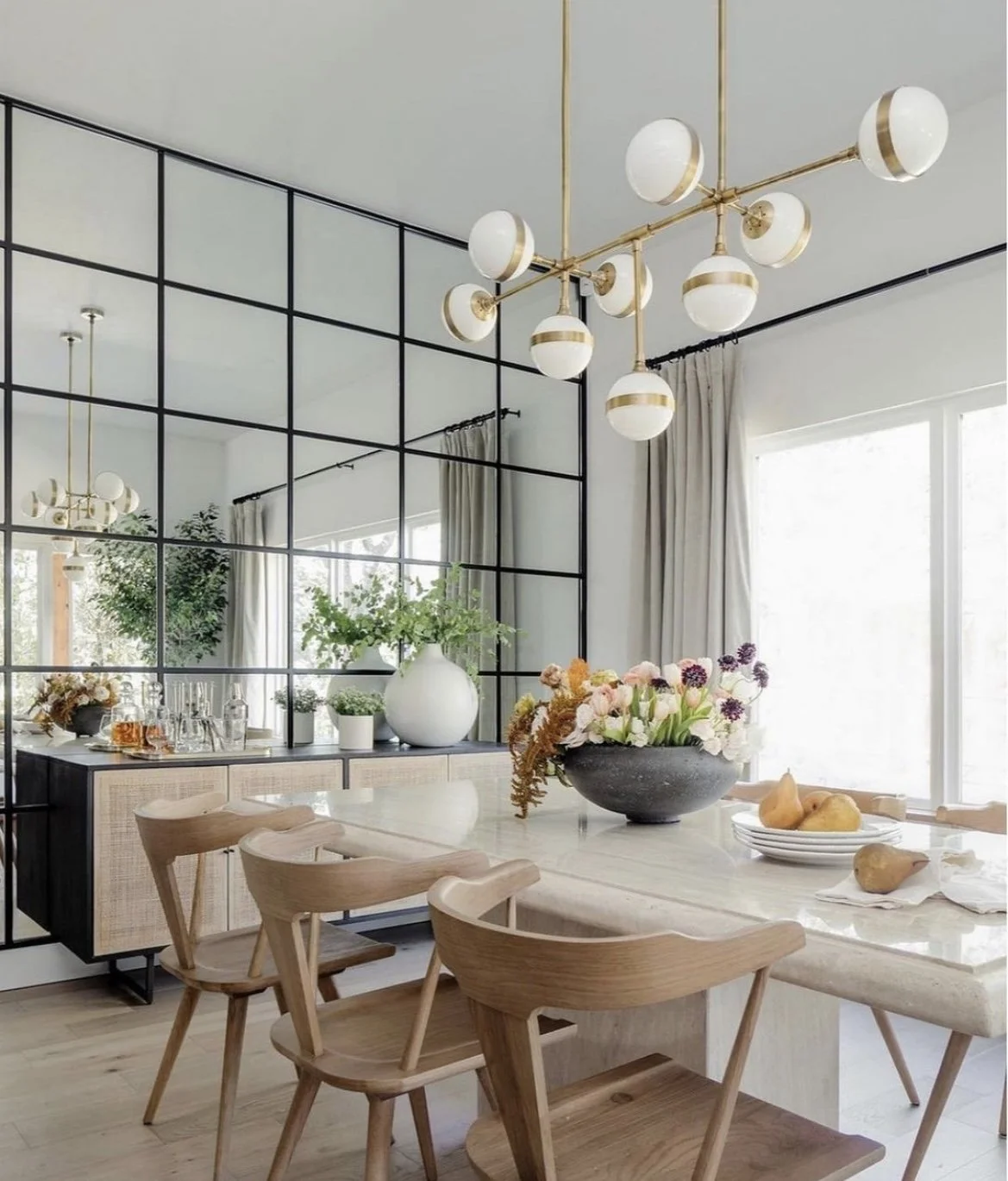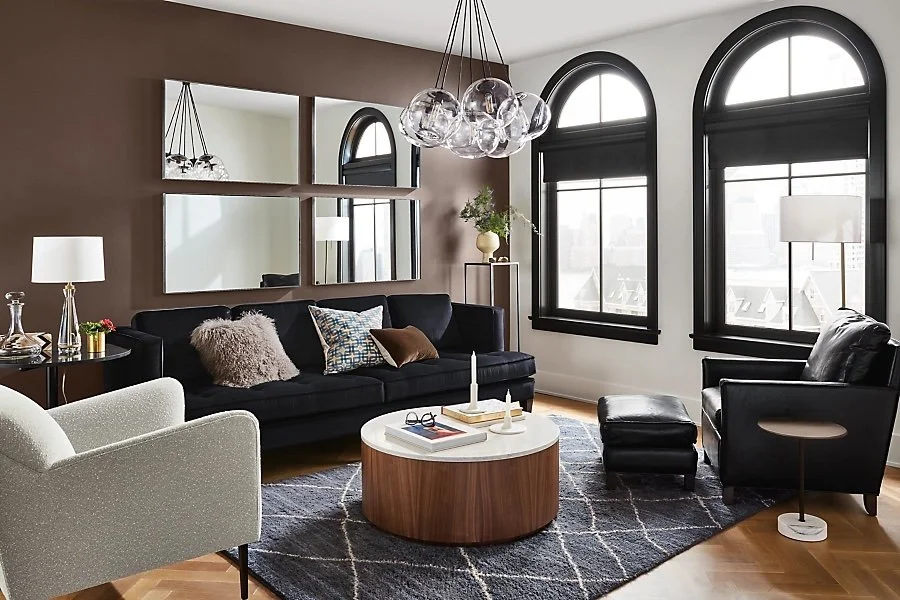Transform Your Home With Mirrors
Mirrors add interest, style and functionality to your home.
Types of Mirrors in Interior Design
Wall Mirrors:
These are the most common type, used for both functional and decorative purposes. They come in various shapes and sizes, from full-length mirrors for dressing rooms to small, decorative pieces.
Floor Mirrors:
Standing mirrors, often with ornate frames, add a statement to any room. They are particularly useful in bedrooms and dressing areas.
Decorative Mirrors:
With unique frames and shapes, these mirrors serve more as art pieces than functional items. They are often used to add character to a space.
Design Techniques with Mirrors
No. 01
Enhancing Space and Light
Mirrors are famously used to create an illusion of space. Placing a large mirror in a small room can make the room appear twice its size. This effect is further amplified when mirrors are placed opposite windows, reflecting natural light and brightening the space. In dimly lit areas, mirrors can be strategically placed to reflect artificial light, enhancing the overall luminosity of the room.
No. 02
Focal Points and Aesthetic Appeal
A well-placed mirror can serve as a stunning focal point in a room. For instance, a large, ornate mirror above a fireplace commands attention and adds a sense of grandeur. In contemporary settings, a series of smaller mirrors with minimalist frames can create an eye-catching display. Mirrors with intricate frames can also add texture and contrast to a room, contributing to its aesthetic depth.
No. 03
Make Your Mirror A Window
In windowless rooms – typically, that’s bathrooms – a mirror can make a world of difference; go big and choose a sizeable design to maximize luminosity and make the space feel larger. Frameless mirrors are great tools in these instances – look for a design that fits your space from wall to wall to create a seamless effect.
No. 04
Create A Focal Point With A Mirror
When it comes to choosing wall art for your home, decorative mirrors with ornate frames or sculptural designs can make as much of an impact as paintings. Mantelpieces are often popular spots above which to hang or prop a mirror, but, in rooms lacking this feature, a larger mirror is a great tool for dictating the centre of the room. Experiment with angles and placements to see what provides the best effect for your space.
No. 05
Full Length & Large Mirrors
A full-length mirror is amazing for so many reasons. Bringing height and reflecting light into your space, long mirrors are perfect for making any room appear more open. What’s more, you can really have fun with your design choice and make your large mirror a statement piece amongst your decor. As such, long mirrors work wonderfully as the hallway, bedroom or bathroom mirrors alike. If you want to make a dressing area in your home, your full-length mirror is a key way to do this.
No. 06
Functional Art
Decorative mirrors, especially those with artistic frames or shapes, can be used as functional art. They add visual interest to walls, much like paintings or photographs, while still serving a practical purpose. This blend of utility and beauty is particularly appealing in modern interior design.
Tips for Incorporating Mirrors in Interior Design
Understand the Space: Before choosing a mirror, assess the room’s size, lighting, and style. A large mirror in a small room can create an illusion of space, while a series of smaller mirrors can add interest to a large wall.
Consider the Purpose: Determine if the mirror is primarily for practical use, decoration, or to bring more light into a room. This will guide the size, placement, and style of the mirror.
Play with Light: Place mirrors to maximize natural light. A mirror opposite a window brings in more daylight, and when placed to reflect artificial light, it can brighten a dark corner.
Use Mirrors as Art: Choose mirrors with unique frames or shapes to use them as art pieces. A mirror can be a focal point in a room, much like a painting.
Create Symmetry and Balance: Use mirrors to create a sense of balance in a room. A large mirror can be balanced with smaller decorative elements on the opposite wall.
Experiment with Groupings: Grouping multiple mirrors of different sizes and shapes can create a striking feature on a large wall.
Reflect Beauty: Position mirrors to reflect the most attractive elements of a room, such as a chandelier, a fireplace, or a view.




















